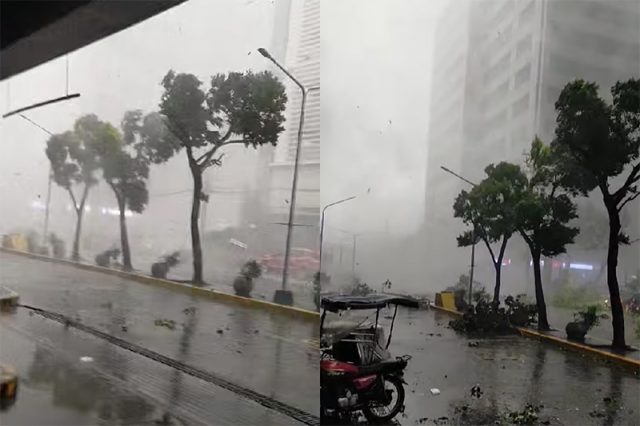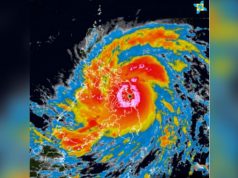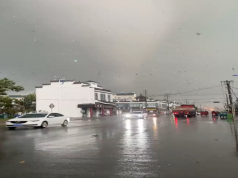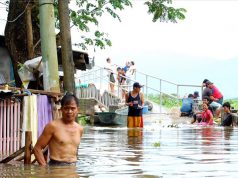
A burst of strong wind and heavy downpour swept away trees and sent one motorcycle tumbling in the San Lazaro area in Sta. Cruz, Manila on Wednesday afternoon.
In a video posted by Jeff Epoy Carreon on Facebook, the tornado-like winds and rain can be seen blowing away traffic cones and large branches of trees on the road.
Carreon was among those who took shelter with other motorists while taking the now-viral video that has garnered 3.2 million views.
ABS-CBN’s resident meteorologist Ariel Rojas said that despite seeming like a tornado, the harsh wind and rain resembled more of a downburst as a result of the intense thunderstorm on June 22.
“The winds are continuously blowing from the same direction, not vertically rotating like those of a tornado’s,” Rojas said in a tweet.
Rojas said in another tweet that based on the video, the downburst seems to have been funneled by surrounding buildings, which resulted in gustier winds.
Downbursts are defined by the National Weather Service, a US agency for weather forecasts, as “powerful winds that descend from a thunderstorm and spread out quickly once they hit the ground.”
The agency also notes that the damage caused by downbursts can be mistaken for tornados.
Tornados are defined by the agency as “a violently rotating column of air touching the ground, usually attached to the base of a thunderstorm.”
Apart from the strong winds and heavy rains experienced in Manila, News5 also reported that residents of Roxas City, Capiz and Tagbilaran, Bohol spotted ipo-ipo or waterspout.
The National Geographic Society defines waterspout as a “column of cloud-filled wind rotating over a body of water.”
“Despite its name, a waterspout is not filled with water from the ocean or lake. A waterspout descends from a cumulus cloud. It does not ‘spout’ from the water. The water inside a waterspout is formed by condensation in the cloud,” the definition reads.
“Waterspouts are similar to tornadoes but are usually smaller and less intense,” it added.
PAGASA Weather Forecaster Aldczar Aurelio said that waterspouts are caused not just by any thunderstorm – but severe ones.
“Bago magkaroon ng ipo-ipo, may mga mammatus na. Kung may makita kayong bukol-bukol sa base ng clouds, sign na yun na maaring magkaroon ng ipo-ipo,” Aurelio was quoted as saying by News5.
Mammatus clouds have sac-like formations and often accompany severe thunderstorms.
Aurelio said that those near an approaching waterspout should immediately take shelter and avoid structures that could be easily dismantled by strong winds.
“Kayang-kaya kang higupin, itapon sa iba o sa malayong lugar,” he added.









